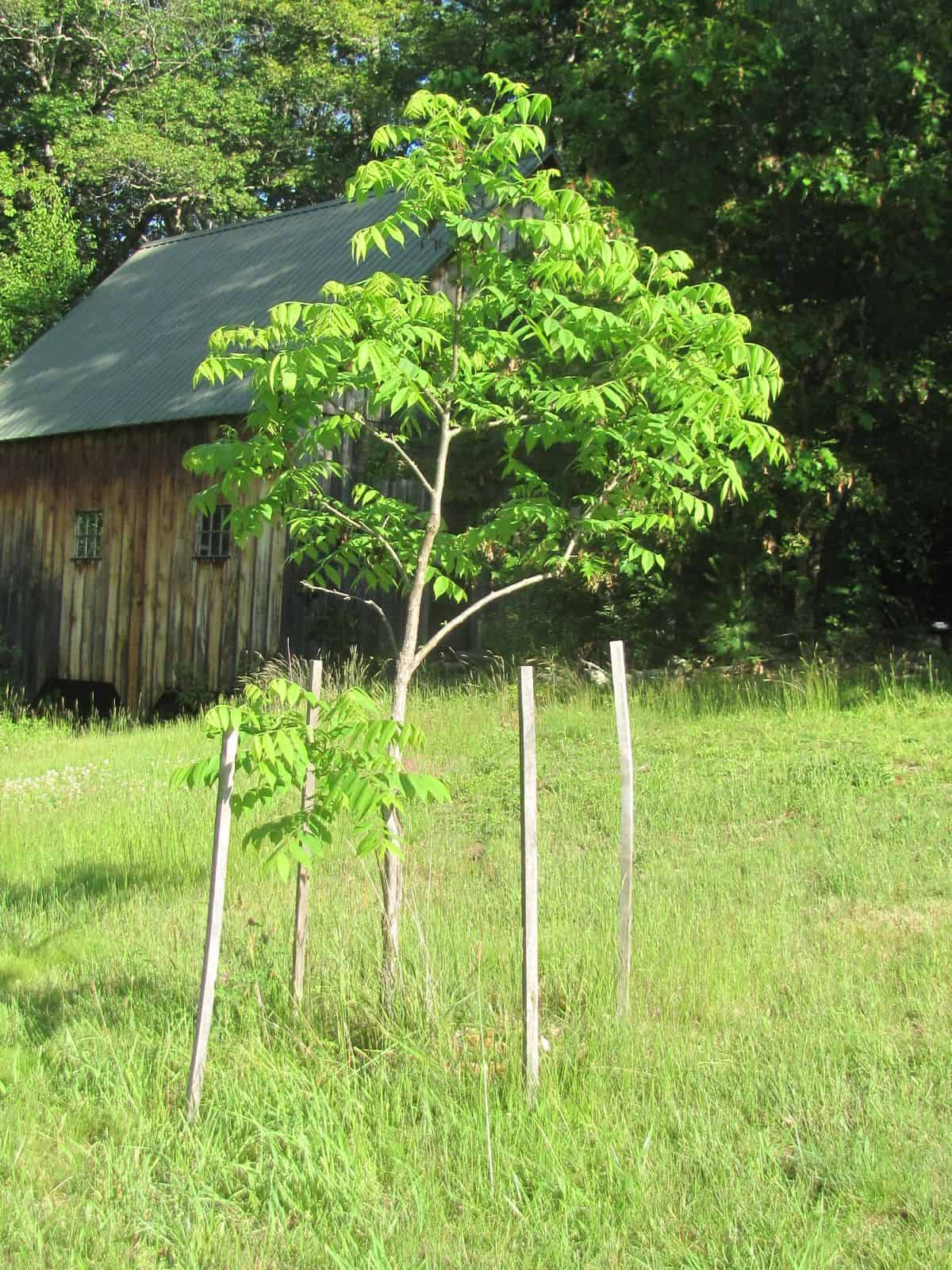
On the lawn of Hugging Bear, next to Chester Historical Society, is a magnificent black walnut tree. This tree is over 100 years old.
In the fall, hundreds of walnuts drop to the ground with a loud thud. Gray squirrels love these nuts. They dig holes in the historical society flowerbeds, and bury nuts for later.
It was probably 10 years ago, in the historical society garden, a young black walnut tree sprouted. By the time it came to my attention, it was 24 inches tall. I transplanted it here at my place.
It didn’t grow much for several years. That’s when I began feeding it. Now it took off. It stands by itself in my field. Today, it’s 10 feet tall.
In the fall of 2021, a buck used the tree for a “scrape,” or “hooking.” Deer do this to mark their territory, or remove velvet from their antlers. With their head down, they use their antlers to scrape up and down the tree.
The buck aggressively scraped my tree, removing the bark from just above ground level, to about 24 inches above ground, and half of the girth.
I was worried I would lose this tree. The wood of the tree was now exposed to disease. The next spring, I watched for signs of life. Sure enough, leaves appeared, but what a nasty scar that tree has. It also grew a low branch at the base of the scrape. Late last summer, I made an attempt to discourage deer from scraping it again. I put four landscaping stakes out from the tree a couple feet. Around the stakes I used monofilament fishing line. I used this line around the tops of the stakes, as well as 18 inches above the ground.
I have been told that deer, when pressing up against something they cannot see, will back off. I use this same technique around my vegetable garden. It seems to work.
This summer, I see new bark beginning to grow over the scar. I also noticed the low branch growing at the bottom of the scrape. I resisted the urge to cut this branch. If Mother Nature wants a branch there, I should leave it alone. Mother knows best. In a few years, when the scar is completely healed, I can safely remove the branch.
In the fall when the walnuts drop to the ground, I always pick up a couple dozen or so. Dan Lamson does the same. I planted a few here several years ago. They came up as tender shoots, a delicacy for deer and woodchucks. So it would be a good idea to build a wire cage to cover the tender shoots.
Both Dan and I spread these walnuts around the area. When I harvest mushrooms in the fall, I carry a few walnuts with me. I use the same tool I use for digging mushrooms to bury a walnut. Dig a hole about two inches deep, insert a walnut, and cover with soil.
Danny Clemons brings me chestnuts he finds in Bellows Falls. These, too, I spread about. Few of these trees will reach maturity.
Walnut trees do well in good soil. Unfortunately, I have poor soil, so feeding is important. Perhaps in another 10 years, my tree will produce walnuts. I hope to see it. Squirrels will bury walnuts in and around stone walls, guaranteeing the species’ survival.
Planting these nuts is a long range project. It won’t be immediate gratification, as we are now so accustomed to, but 30 years from now, property owners will be pleased to have these trees.
Walnut trees can grow large and straight, and have beautiful bark. They make a wonderful shade tree.
Lumber from black walnut trees has always been a choice wood for cabinetmakers. Most Victorian furniture was made of walnut.
This week’s old saying is a short story: I was at a better antiques auction in Plainfield, N.H., back in the 80s. Prices were sky high. I bid and bid unsuccessfully. I was complaining about it to Bill Orcutt when he said, “Unfortunately, you have chosen a profession dominated by people who don’t need the money.” How times have changed.